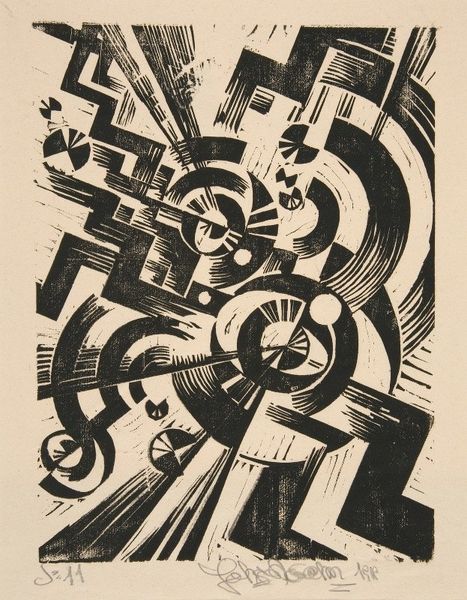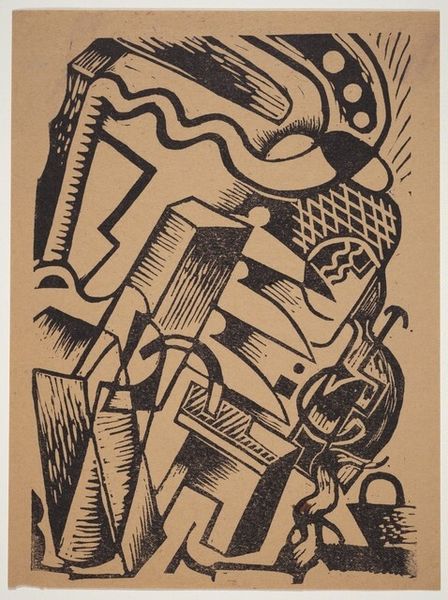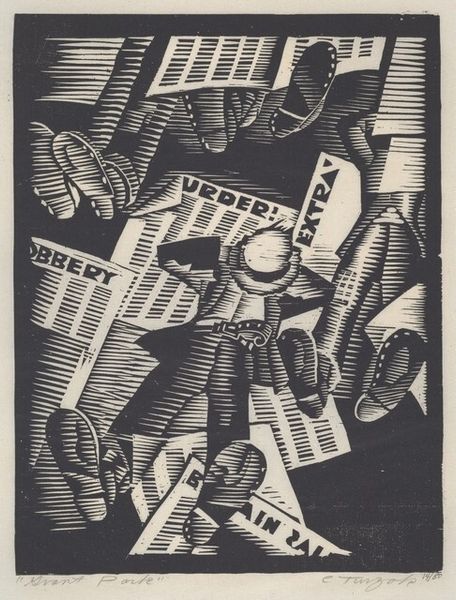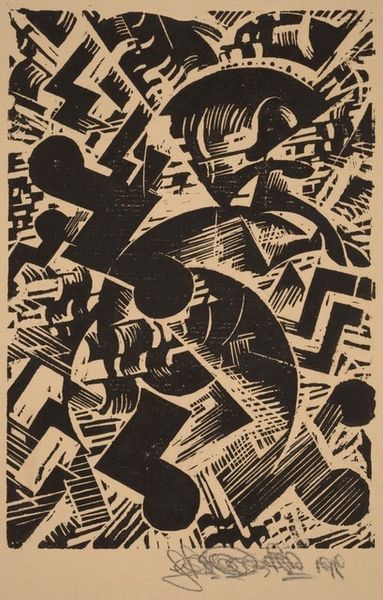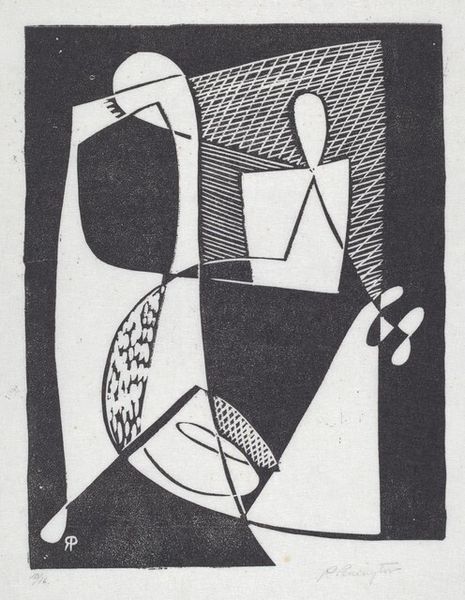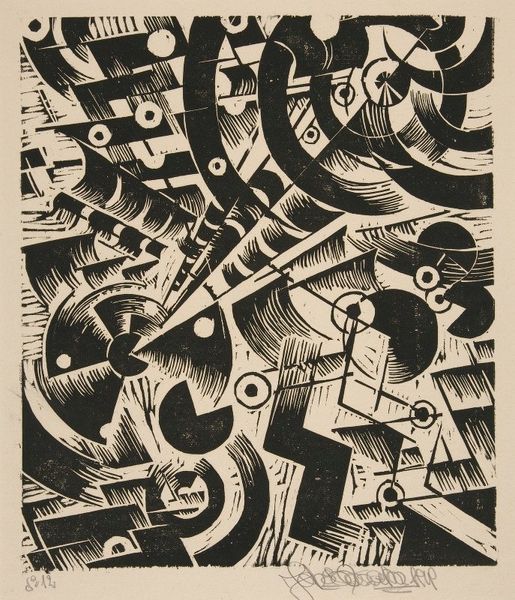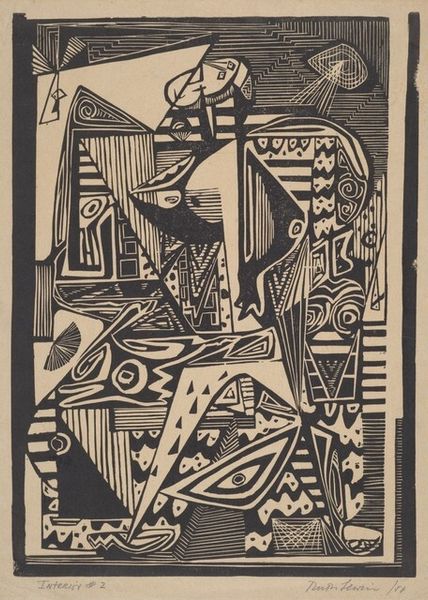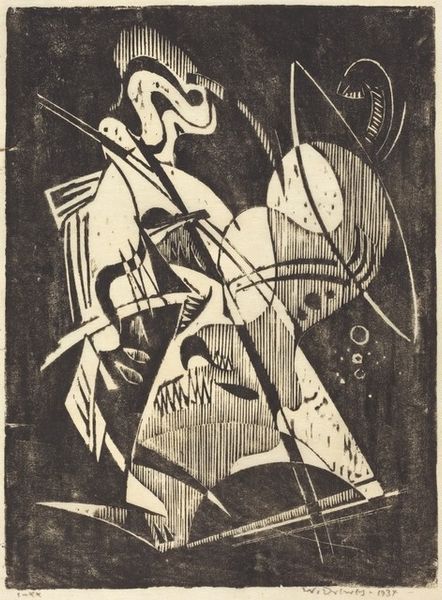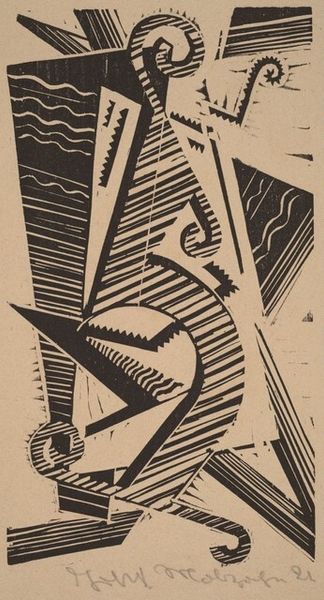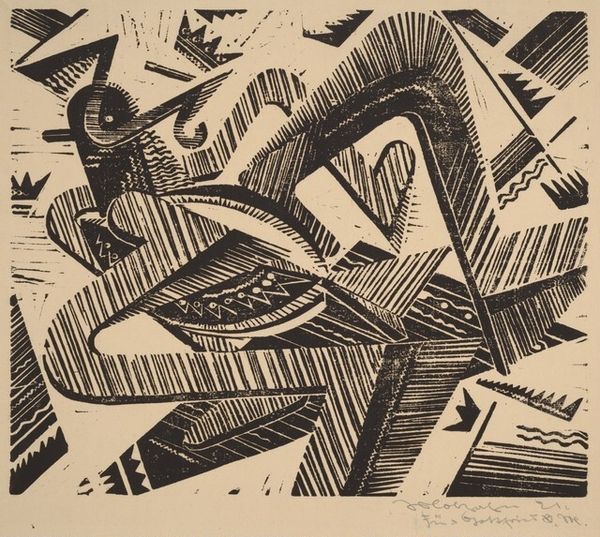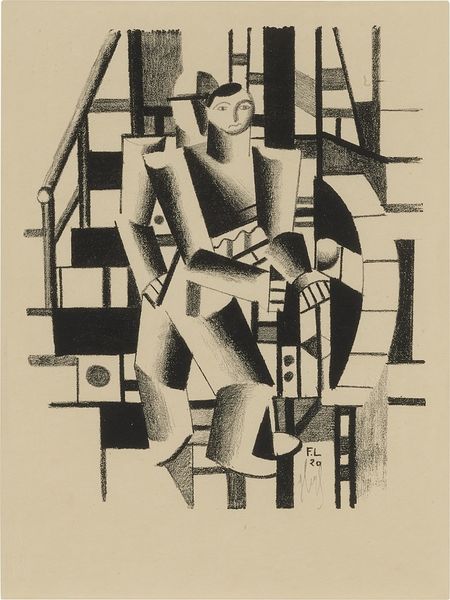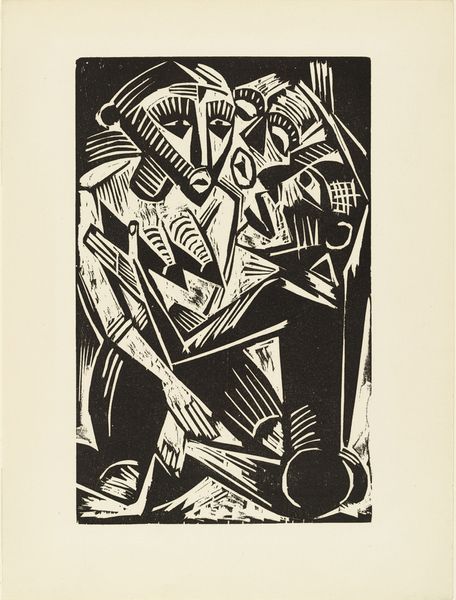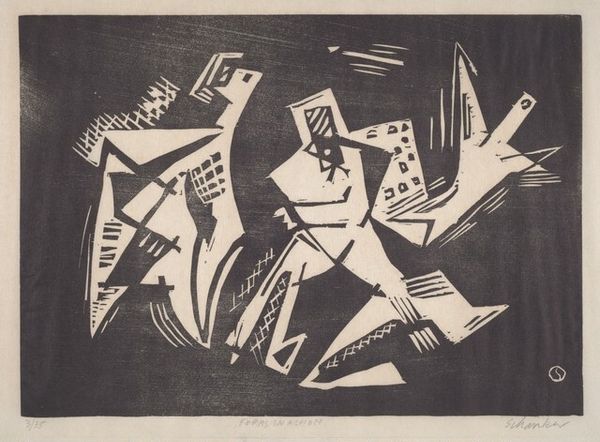
print, woodcut
#
new-objectivity
# print
#
german-expressionism
#
figuration
#
expressionism
#
woodcut
Dimensions: sheet: 39.4 x 29.4 cm (15 1/2 x 11 9/16 in.)
Copyright: National Gallery of Art: CC0 1.0
Otto Dix made this striking print, Apotheosa, in 1919 using woodcut, a process where an image is carved into a block of wood. It's then inked and printed, leaving a bold impression on paper. The stark contrast of black ink against the paper creates a powerful visual impact. This contrast underscores the themes of chaos, social upheaval, and the grotesque, reflecting the artist's experience of World War One and the socio-political climate of postwar Germany. Dix intentionally chose this medium, aligning himself with the German Expressionist movement. Woodcut was not exactly a traditional fine art medium. It had associations with popular broadsides and printmaking, which made it useful for social commentary. The labor-intensive process also mirrors the immense work and struggle of this period. By using materials and processes outside the traditional realm of fine art, Dix challenges our understanding of artistic value, asking us to reconsider what constitutes 'high art' and to appreciate the significance of making in understanding an artwork's meaning.
Comments
No comments
Be the first to comment and join the conversation on the ultimate creative platform.
